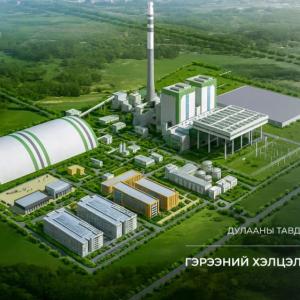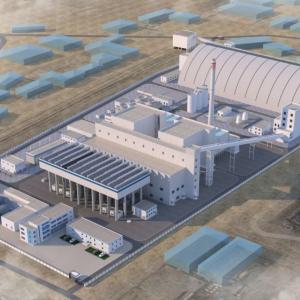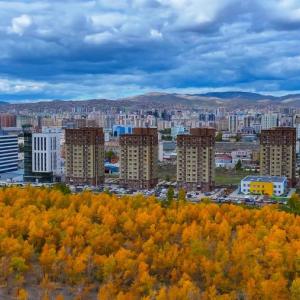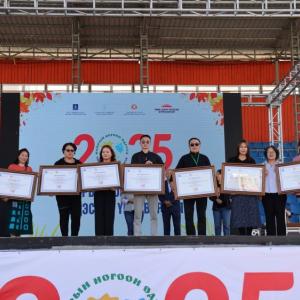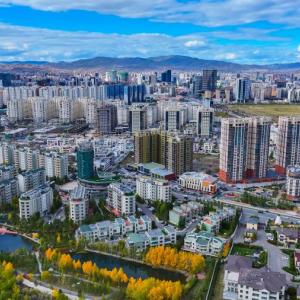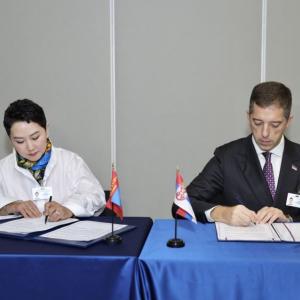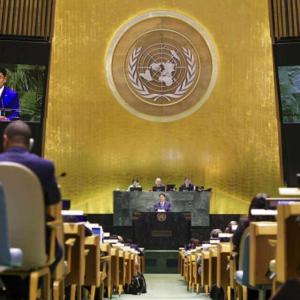Joint Research on air pollution of Mongolia
PoliticsUlaanbaatar /MONTSAME/ U.S. National Institutes of Health's National Library of Medicine (NIH/NLM) published a joint research by Simon Fraser University, Health Sciences University of Mongolia, National Agency for Meteorology and Environmental Monitoring, and World Health Organization on Mongolian air pollution and its attributable mortality of 2011.
It's conservatively estimated that 29% of cardiopulmonary deaths and 40% of lung cancer deaths in the city are attributable to outdoor air pollution.
These deaths correspond to nearly 10% of the city’s total mortality, with estimates ranging to more than 13% of mortality under less conservative model assumptions.
There is evidence that fine particulate matter generated by combustion may be especially damaging to human health (Pope and Dockery 2006; Schlesinger et al. 2006). Estimates of the annual global mortality attributable to outdoor air pollution range from 0.8 million to over 4 million, with the majority of attributable deaths occurring in Asia (Cohen et al. 2005; Anenberg et al. 2010).
Mongolia’s population has undergone rapid urbanization since the mid-1990s, and this shift has had a major impact on the capital city, Ulaanbaatar, which is now home to 1.11 million of the nation’s 2.74 million inhabitants (National Statistical Office 2010). Population growth has led to major increases in the city’s air pollution emissions (Asian Development Bank 2006; Guttikunda 2007). Much of the population growth has been in the city’s low-income ger (traditional Mongolian dwelling) areas where coal and wood are burned for heat (World Bank 2004). Half of Ulaanbaatar’s population lives in a ger (Asian Development Bank 2006), and the city’s 160,000 gers each burn an average of 5t of coal and 3m3 of wood per year (Guttikunda 2007). Mobile sources also contribute to air pollution in Ulaanbaatar.
From 1995 to 2005, the number of vehicles in Ulaanbaatar increased from 30,000 to 75,000 (Asian Development Bank 2006), and Mongolia is 1 of only 17 countries where leaded gasoline is still legally available (HEI 2010). The city’s other major air pollution sources include three coal-fueled combined heat and power plants, approximately 400 heat-only boilers, and wind-blown dust (World Bank 2004; Davy et al.2011). A recent source apportionment study found that the majority of PM2.5 in Ulaanbaatar is produced by coal combustion (Davy et al. 2011). Ulaanbaatar is located in a valley with mountains to the north and south (Asian Development Bank 2006; Davy et al. 2011). The topography, extensive pollution emissions, and frequent temperature inversions combine to cause very high pollution concentrations in the winter months.
Based on 2009 mortality statistics, we conservatively estimated that 623 deaths in Ulaanbaatar were attributable to air pollution. This represents 9.7% of the 6,426 total deaths in the city and, notably, 4.0% of the 15,522 annual deaths for the entire country.
Attributable mortality probably underestimates the true public health burden of air pollution in Ulaanbaatar (Kunzli et al. 2000, 2008). Nonmortality endpoints are linked to air pollution such as cardiovascular disease, impaired lung development, incident asthma, asthma exacerbations, bronchitis, hospitalizations, and school absences (Pope and Dockery 2006; Brook et al. 2010; Allen et al. 2009; Gauderman et al. 2004; Clark et al. 2010; Perez et al. 2009). The higher attributable mortality estimates 10.6–13.1% of total mortality.
Estimates of attributable mortality are often misinterpreted as “avoidable” deaths, but it is more appropriate to interpret these as estimates of “postponable” deaths (Brunekreef et al. 2007). Air pollution represents a major threat to public health in Ulaanbaatar, and reductions in home heating emissions should be the primary focus of future air pollution control efforts.

 Ulaanbaatar
Ulaanbaatar



